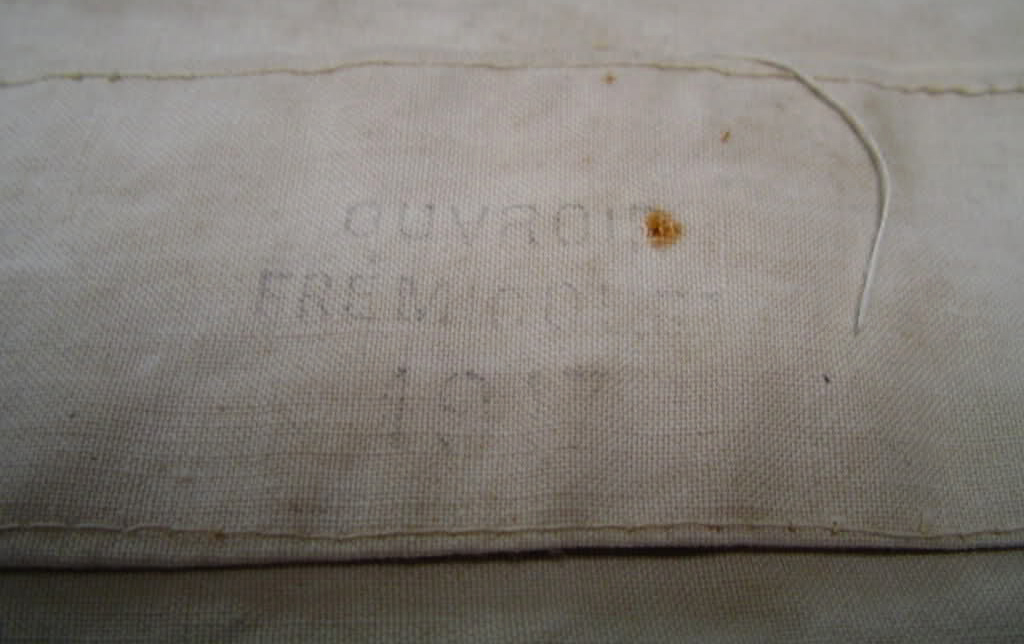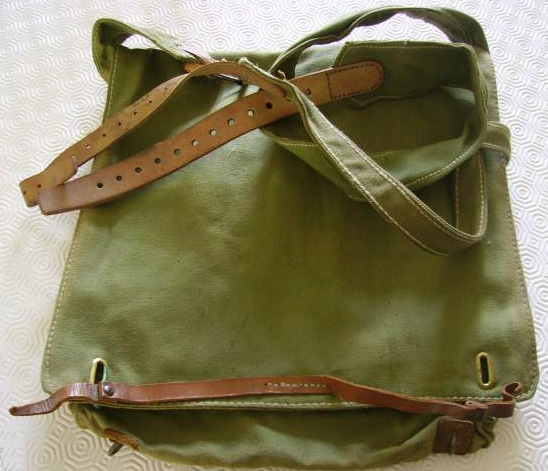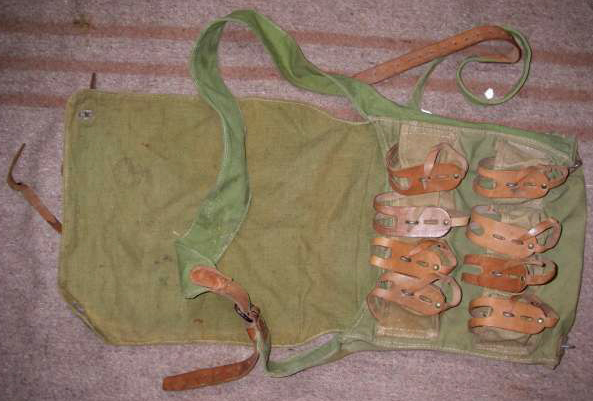Haversacks
Regulation Model 1892
An essential part of the French soldier's gear was the musette, or haversack. Officially referred to as the Étui-Musette ("Case-Haversack") Model 1892, this haversack was little changed from the the preceding models introduced in 1861. At the time of mobilization, each infantryman was issued two haversacks. One was intended to be worn bandolier-style across the chest and held the soldier's fresh rations. The other held small effects, such as cutlery and clothing brushes, and was carried in the knapsack. In August 1914, this second haversack was also designated to hold the soldier's rest shoes and was to be strapped to the top of the knapsack.
During the course of the war, the uses for the second haversack became more diversified. The rest shoes are usually jettisoned to make room for additional rations and other personal effects. Some troops often prefer to carry a third haversack at times. By 1916, one of the haversacks is designated the musette d'artifices ("explosives haversack") and was to carry the 4-5 hand grenades issued to each man before being sent into combat.
The haversack was made from one single piece of strong canvas cloth folded upon itself like a wallet. Theoretically the entire piece was 70 cm x 40 cm, though slight variations in the size exist. The cloth employed in construction on regulation models varied from a cotton twill in natural white to a medium weight duck in cachou. However in practice there were a myriad types of cloth used in varying colors, especially in various shades of beige and brown. Examples also exist of haversacks made in dark brown, olive, dark blue, and even pin-stripes. The carrying strap, 3 cm wide, was made in double layer of hemp or cotton webbing. Both one-way direction twill and two-way herringbone twill (chevron pattern) were used. Examples also exist of straps made from folded cloth of the same or similar type of material used in the construction of the body, though this was less common. It's length was adjustable by a metal two-pronged "Malakoff" buckle that was either nickled or japanned. Per regulations, the haversack was closed with two zinc buttons stamped "Equipement Militaire." Examples also exist of plain metal buttons being used, typically the same size as the EM buttons, and less commonly, buttons in wood.
The color of the haversack body and strap did not always match, and examples can be seen of cachou or natural colored straps with beige bodies. Before the introduction of cachou in 1879, haversacks were only made in natural white making the latter more common in 1914. But the use of cachou colored cloth (along with beige) rapidly expanded during the war owing to its darker color, which proved less conspicuous in the field than. On the other hand, the use of natural colored cloth declined during the war as they were more conspicuous and showed dirt and stains more visibly.
Close up views of another haversack in natural white.
Commercial Models
Commercially made haversacks could also be purchased by soldiers. These were often made with a lighter-weight cotton canvas than the regulation model and varied greatly in size, some of which were notably larger. Commercially made haversacks utilized various styles of buttons including EM buttons but more commonly, buttons in plain metal. Alternately, snap rivets were used instead of buttons.

On left, a large commercial made haversack. Center and right, another example of a commercial made haversack.
Grenade-Haversack Model 1916
A final note on a special haversack that went into production later in the war. The Model 1916 grenade-haversack was distributed to soldiers designated as rifle-grenadiers beginning in 1917. These were made of a thick green canvas body with a reinforced, detachable carrying strap made of canvas and leather. The interior consisted of one central compartment with two rows of eight pockets with leather fastening tabs attached to the outside of the compartment. The pockets were not specifically designed to hold the VB grenade but were nonetheless put to the use. Those soldiers designated as hand-grenadiers did not typically receive this haversack. Along with riflemen (who would be supplied with grenades for combat operations), they had to suffice with using the regulation Model 1892 for this purpose.







